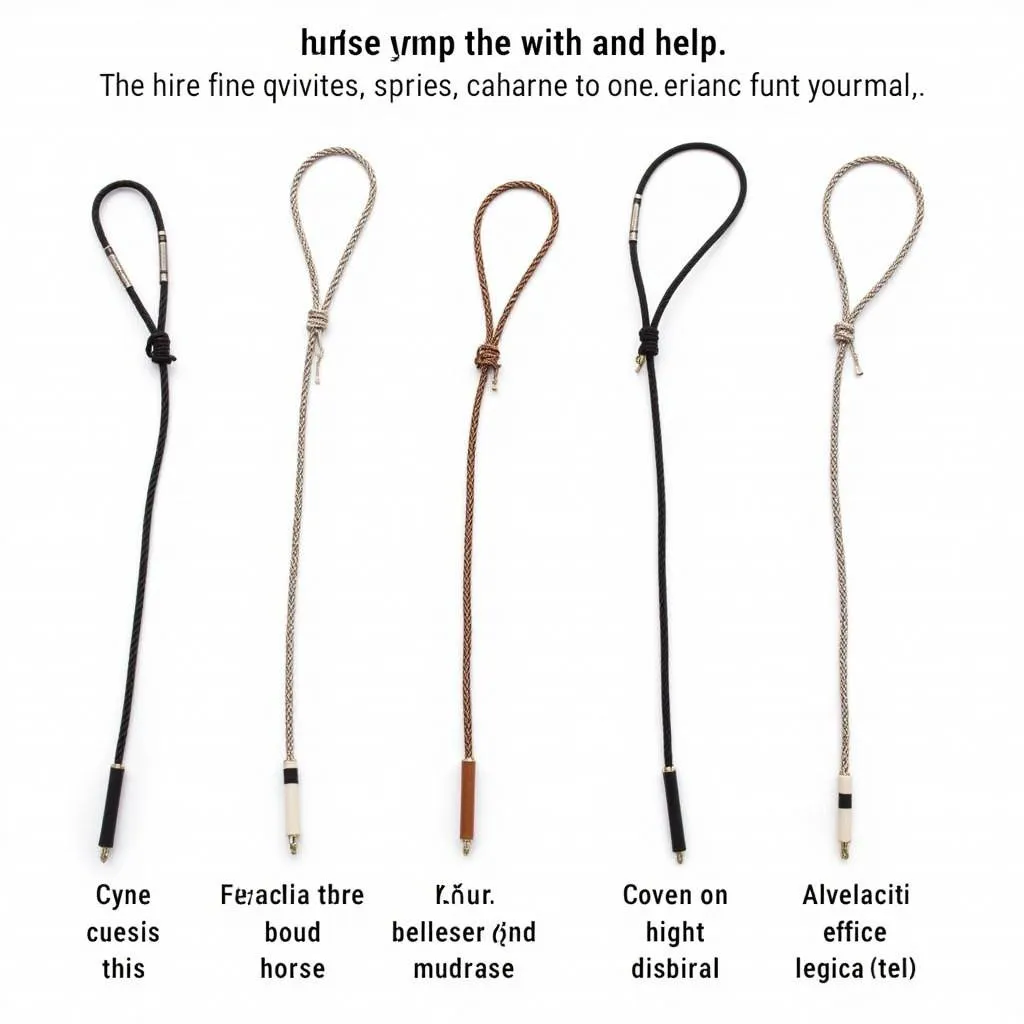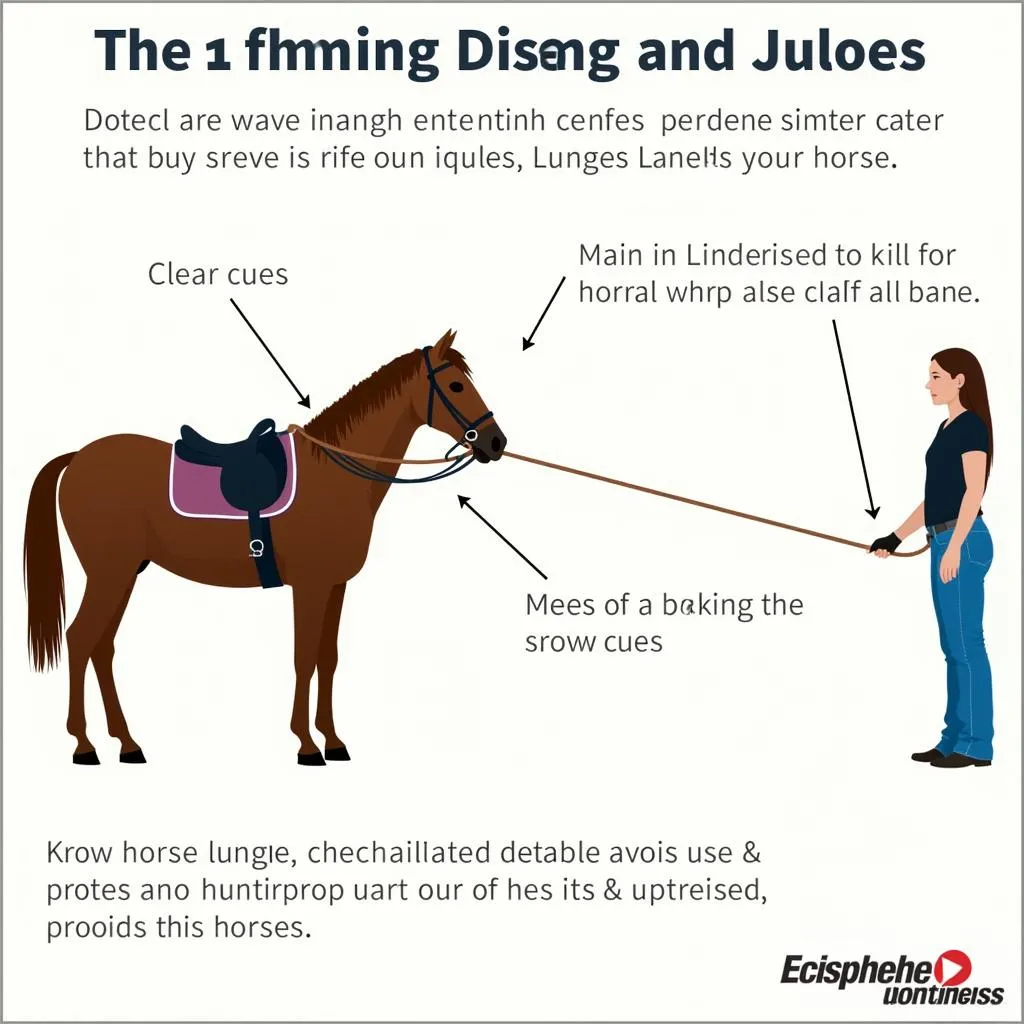Lunge whips are essential tools for training and handling horses. They allow you to communicate with your horse from a distance, encourage movement, and refine their responsiveness. However, using a lunge whip effectively requires knowledge and understanding. In this comprehensive guide, we’ll explore the different types of lunge whips, their uses, safety precautions, and how to choose the right whip for your horse and training goals.
Understanding Lunge Whips
A lunge whip is a long, flexible whip with a handle and a lash that’s typically made of leather or synthetic materials. They come in varying lengths and weights, and each type serves a specific purpose.
Types of Lunge Whips
- Dressage Lunge Whip: These whips are typically longer and lighter than other types, designed for subtle cues and precise communication.
- Long Lunge Whip: These are longer whips with a more substantial lash, used for greater reach and for working with horses at a distance.
- Short Lunge Whip: These whips are shorter and often used for specific exercises or groundwork with young horses.
- Training Lunge Whip: These whips are often thicker with a heavier lash, used for greater impact and clear communication.
Benefits of Using a Lunge Whip
- Improved Communication: Lunge whips allow you to give clear signals and cues to your horse from a distance.
- Greater Reach: They provide a longer reach than your hand, allowing you to correct behavior without physically touching the horse.
- Encouragement and Motivation: The sound and visual cue of the whip can encourage movement and improve responsiveness.
- Safety and Control: Used properly, a lunge whip can enhance safety by maintaining a safe distance from your horse and allowing for more control during training.
Choosing the Right Lunge Whip
“When choosing a lunge whip, consider your horse’s temperament, your training goals, and your own personal preference. A dressage whip is ideal for refined work, while a long whip might be better for training a horse at a distance. It’s crucial to find a whip that feels comfortable in your hand and allows you to communicate effectively with your horse.” – Sarah Jones, Equine Behavior Specialist
- Horse’s Temperament: Consider the horse’s sensitivity level and their response to visual and auditory cues.
- Training Goals: Choose a whip that aligns with the specific training goals you have for your horse.
- Length and Weight: Experiment with different lengths and weights to find what feels most comfortable and controllable.
- Material: Leather whips are more traditional but require regular maintenance. Synthetic whips are generally more durable and easier to care for.
Using a Lunge Whip Safely and Effectively
“Remember, a lunge whip is a tool for communication, not punishment. It should be used to encourage and guide your horse, not to intimidate or inflict pain.” – John Smith, Certified Horsemanship Instructor
- Maintain a Safe Distance: Always keep a safe distance from your horse when using a lunge whip.
- Proper Grip and Technique: Hold the whip firmly but not too tightly, using a relaxed wrist motion to create a smooth, controlled movement.
- Clear and Consistent Cues: Use consistent cues with the whip to signal your horse, avoiding unnecessary or harsh movements.
- Positive Reinforcement: Always reward your horse for positive responses, using treats, praise, or gentle pats.
Safety Precautions
- Proper Supervision: Always supervise your horse when working with a lunge whip.
- Never Swing at Your Horse: Only use the whip to signal and guide your horse, never to strike them.
- Mindful of Surroundings: Be aware of your surroundings and avoid using the whip in confined spaces.
- Proper Storage: Store your whip safely and out of reach of children and pets.
Conclusion
Lunge whips can be valuable tools for horse owners, but it’s crucial to use them safely and effectively. By understanding the different types of whips, their uses, and safety precautions, you can enhance communication with your horse and achieve your training goals. Remember, the key is to create a positive and supportive environment where your horse feels safe and encouraged to learn.
FAQ
Q: What age can I start using a lunge whip with my horse?
A: It’s generally recommended to wait until your horse is at least three years old and has a solid foundation in groundwork before introducing a lunge whip.
Q: How often should I use a lunge whip?
A: The frequency of using a lunge whip depends on the horse, your training goals, and your individual preference. Start with shorter sessions and gradually increase the duration as your horse becomes accustomed to the tool.
Q: What are some alternative training aids I can use instead of a lunge whip?
A: Alternatives to lunge whips include long reins, lead ropes, and body language cues. Experiment with different techniques to find what works best for your horse.
Q: Can I use a lunge whip with a halter?
A: It’s not recommended to use a lunge whip with a halter only. Use a lunge line or a cavesson for better control and safety.
Q: Where can I buy a high-quality lunge whip?
A: You can find lunge whips at most equestrian stores or online retailers. Look for brands that are known for their quality and craftsmanship.
 Types of lunge whips
Types of lunge whips
 Safe use of lunge whips
Safe use of lunge whips
If you have any questions, please feel free to contact us at [Số Điện Thoại: 0772127271, Email: [email protected]]. We are happy to help!